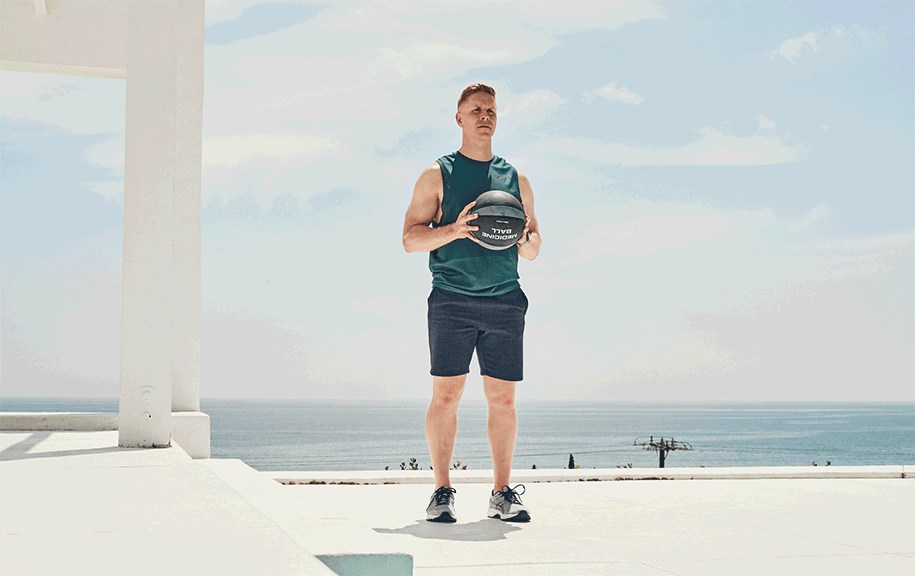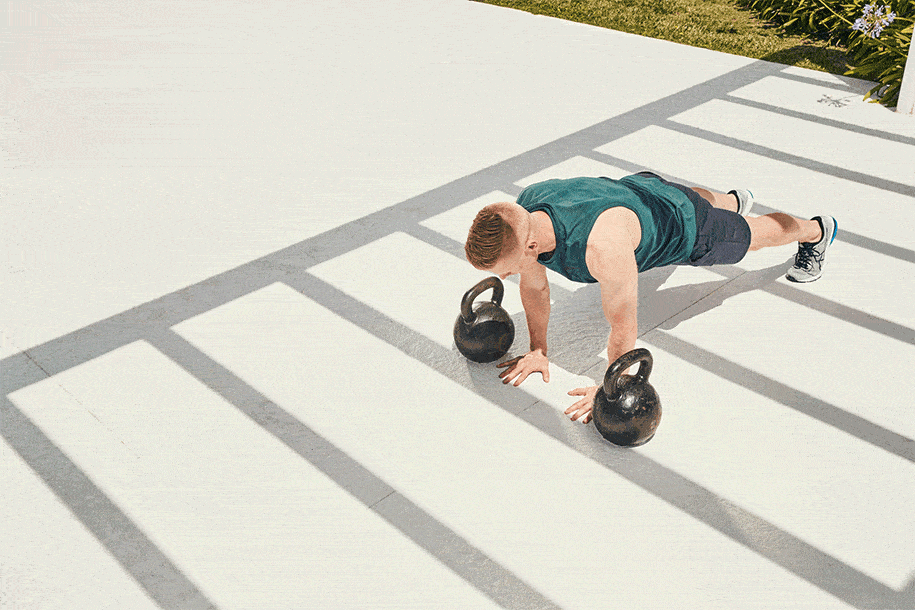Today I’ll share my surprising answer. I’ll also explain how we’ve used certain “best diet” principles in our coaching program to help change the lives of tens of thousands of men and women.
++++
When considering making improvements to the way you eat, it’s so easy to set out in search of The Best Diet. You know, the one that’ll finally…
… help you drop the pounds (and body fat) you’ve been unable to lose, in some cases, for years.
… make you feel physically strong and mentally sharp.
… help you rock a swimsuit at an upcoming pool party, enter a room with confidence, and actually enjoy having your picture taken.
… give you some energy back so you can run around with your kids (or grandkids), take the stairs without getting winded, and book a bucket list trip without worrying about whether you’re up to it.
Here’s the thing. That Perfect Diet might not exist. (At least not the way you think it does.) But the way you want to look, and feel? It’s totally possible.
We’ll dig into this idea in a second.
What is the best diet?
A while back, I did a short media blitz in Toronto, appearing on three TV networks and speaking with 13 print journalists in a single day.
While the journalists’ questions ranged from health and weight loss to sports nutrition, one particular theme kept emerging. They wanted to know which “nutrition camp” I belong to.
From one award-winning journalist:
“I’ve visited your website and I’m still not sure: do you guys believe in ‘paleo’? Or do you believe in the standard ‘RD stuff’?”
From a TV broadcaster (on air, no less):
“Your coaching program sounds great. But, if I were to sign up for it, would I have to cut out all my carbs?”
From a production assistant on a TV program:
“I have a friend who’s vegan and she’s super healthy. I’m thinking of trying it…what do you think?”
In that one day I received at least a dozen questions like this, all of which essentially ask the same thing:
What’s the “best diet” for people to follow?
After answering the same questions over and over again I started to get annoyed. Not at the journalists, mind you. But at myself. Because even after years of the same question, I haven’t yet come up with a pithy, one-liner response.
I simply don’t fall into a single “diet camp”. And that confuses the hell out of people, since the human brain likes easy categorization.
“But … but … I need to fit you into one of these nice little nutrition boxes.”
If I could help people stick me and Precision Nutrition into the right nutrition box, I would. Believe me, it’d make things a lot easier.
But I just can’t do it.
Here’s why: I don’t believe there’s a single, absolutely, positively, without-a-doubt best diet for every person to follow, always, and forever.
Spend enough time actually working with clients — like we do every day — and you’ll probably start to feel the same way too.
Think about this: Our coaching program has been tested with nearly 50,000 clients in 100 different countries. (Plus it’s been validated in several peer-reviewed scientific studies).
You can imagine the diversity.
- Body type: Some clients come to us tall and thin. Others come short and stocky.
- Dietary preferences & exclusions: Some clients come to us eating lots of meat every day. Others come eating no meat at all.
- Budget: Some clients come to us with an incredibly low budget. Others come with an unlimited budget.
- Organic / conventional: Some clients come to us eating only boxed and packaged foods. Others come eating only natural, organic, whole foods.
- Nutrition knowledge: Some clients come to us as devout followers of a certain dietary practice. Others come with very little nutrition knowledge whatsoever.
- Time: Some clients come to us with lots of free time for a health and fitness project. Others come with very little time to devote to health and fitness.
You get the picture.
There’s simply no way we’d be able to help all those folks make incremental improvements in their eating if we were militant about a single nutrition paradigm.
Can you imagine:
“I know you have a super-low budget for food. But if you sell your vehicle, or maybe one of your children, you’ll be able to afford the organic and free-range whole foods we recommend in our program. That’s the only way to get healthy and fit.”
“Carbs? You’re not alone. We all like ‘em. But this program is all about cutting way back. Low carb is what works, period. Insulin is the enemy. So say goodbye to sugar. And pasta. Potatoes too. And rice…”
“Sure, I understand the moral and ethical obligation you feel. But eating animal foods… that’s how we do it. You need the protein and the fat. And it’s how our ancestors ate. So suck it up, throw a steak on the grill, and let’s get this party started.”
While these responses are a little extreme, they’re not that far from what I hear every day in the gym or read on Facebook. And it’s a shame because…
The best coaches don’t have a single nutrition philosophy.
Sure, if a particular nutrition idea — like Paleo or vegetarianism — worked for you personally, that’s awesome. You should be happy you found something that helped you reach your goals.
But to suggest that because it worked for you, at one point in your life, under a particular set of circumstances, now everyone else should follow the same program? Well, that’s just silly.
Physiologically, the human body can do well under a host of different nutritional conditions.
This is clearly demonstrated by examining the traditional diets of various tribes and ethnic groups throughout the world.
- For example, the Arctic Inuit and African Masai eat traditional diets that are very high in fat and animal products with very few vegetables.
- Conversely, the Kitavans in the South Pacific eat traditional diets that are low in fat but very high in vegetables and starchy carbs.
- And the Tokelau near New Zealand eat traditional diets that are very high in saturated fats.
Crazy differences, right? Yet all traditional diet eaters are relatively healthy people with minimal incidences of cardiovascular disease, stroke, diabetes, inflammatory obesity, etc.
This is only possible because the human body is amazingly adaptable to a host of different dietary conditions.
It is possible to be healthy and fit whether you eat mostly meat or mostly veggies, mostly fat or mostly carbs, many times a day or just a few times, and so on.
Which means that, as a nutrition coach, I shouldn’t really belong to any specific nutrition camp at all.
When you work with actual human beings, you must be a nutritional agnostic.
Open to evaluating anything and everything that could work. Willing to test new methods, even if they fly in the face of current beliefs or practices. And humble enough to sometimes be wrong, even if you really like being right. (Which I do.)
If I believe too strongly in any particular “nutritional religion”, I fixate on the food itself. Or my own personal way of looking at food. And I lose focus on what’s most important as a coach: my clients and their individual physiological and psychological needs.
Here’s another example: our Precision Nutrition staff. With close to 100 team members, PN is like a nutritional United Nations convention.
- Some eat plant-based diets. Others eat meat-based diets.
- Some eat high carb diets. Others eat low carb diets.
- Some eat dairy-free, gluten-free, and all other potential allergen-free diets. Others “eat whatever I want as long as I get enough proteins and fats and stay healthy” diets.
The common theme is that we all practice what we preach, we all take health and fitness seriously, and we all monitor the results of our dietary choices closely, adjusting where necessary.
We respect each other’s choices and get along just fine. We’re more interested in exploring what works than we are in being right.
But wait … how can all these different diets actually work?
You’re probably wondering: How can such wildly different nutrition programs all lead to positive results?
My response: They’re not as different as you might think.
Most effective nutrition programs are more similar than different. (Yes, even Paleo and plant-based eating.)
When done properly, Paleo diets, plant-based diets, high carb diets, low carb diets, eating small meals frequently, eating larger meals infrequently, etc. all accomplish the following:
1. They raise nutrition awareness and attention.
I know, everyone wants to talk about the food itself — the proteins, carbs, and fats. What to eat more of and what to avoid.
But research is now showing that simply paying better attention to what you eat is a key factor in whether you’ll lose fat, get lean, and improve your health.
Whether your attention is trained on avoiding carbs, eating more vegetables, seeking out organic / free-range food, avoiding animal foods, or avoiding “non-Paleo” food, it’s all good.
Because what you focus on may not matter as much as simply caring more about what you’re eating in the first place.
2. They focus on food quality.
Paleo and low carb advocates want you to eat more natural, free-range animal-based foods that are higher in protein, higher in fat, and are minimally processed.
Vegan and high carb advocates want you to eat more natural, plant-based foods that are higher in fiber, antioxidants, and are minimally processed.
Recognize what’s common here?
Indeed, very few nutrition camps recommend you eat more processed, chemical-laden “junk” food. (Thank goodness.)
Instead, pretty much every camp recommends eating whole, minimally processed, nutrient-rich foods. And that may be one of the most important nutrition interventions of all, regardless of the protein, carb, and fat breakdowns.
3. They help eliminate nutrient deficiencies.
In keeping with the last point, the best nutritional advocates help us shift away from highly processed foods, which are often low in nutrients because they’ve been stripped out during processing, and toward more whole, minimally processed foods, which often have their nutrients intact.
Thus, a properly designed diet of any kind eliminates some of the most common nutrient deficiencies (water, certain vitamins and minerals, proteins, and essential fatty acids).
This is huge. We often look, feel, and perform terribly when we’re deficient in important nutrients. But within a few weeks of correcting these deficiencies, we feel totally rejuvenated. (And because the transformation is so dramatic, that’s often when we become diet zealots.)
4. They help control appetite and food intake.
When we’re more aware of what we’re eating, choose more satisfying, higher quality foods, and eliminate nutrient deficiencies, we almost always end up eating less total food. We feel more satisfied. We lose fat, gain lean muscle, and perform better.
Notice that you don’t need calorie counting here. Focusing on food awareness and food quality is usually enough for people to tune into their own hunger and appetite. And that means calorie control without the annoying calorie math.
It also means you can maintain your results / weight loss. Counting calories has a shelf-life; no one does it forever.
5. They promote regular exercise.
When people start paying attention to their eating, they usually start thinking about physical activity too. In fact, many of the diet camps recommend regular exercise. (Which is a good idea, since focusing on diet alone may actually interfere with establishing a consistent exercise routine.)
When a person exercises regularly, with a mix of high and low-intensity activity, they dramatically improve their ability to turn the food they eat — whatever food that is — into functional tissue (instead of extra fat).
Hopefully you can now understand how different well-designed dietary philosophies — even when they seem oppositional and antagonistic on the surface — can all promote good health, body composition, and longevity.
Which is why…
Choosing a single diet camp makes no sense.
1. There’s no such thing as one, universal “best” diet.
There’s no one absolutely, positively, without-a-doubt best diet for everyone. Humans have evolved to do well under all sorts of dietary conditions.
That’s why I’m happy to help people find the best one for them, no matter their dietary preferences.
Of course, this is a big win for my clients: They get in shape doing more of the things they actually like. And a win for me: I get to help more people.
2. Most popular diets actually have a lot in common.
Most popular diets — when done with care, attention, and a little coaching — help control appetite, improve food quality, promote exercise, and raise nutritional awareness.
3. Coaches should never lock into a single philosophy.
In the last 10 years, our coaching programs have helped nearly 50,000 clients lose more than a million pounds of body fat and develop a new relationship with food.
And we’ve done that without forcing a specific diet philosophy on them. Vegans can stay vegan. Paleos can stay Paleo. And they’ve all had success.
If you’re working with a coach who tells you that you have to eat a very specific way to succeed… well, you might want to re-think that relationship.
And coaches: Don’t waste energy bullying people into a particular way of eating. It’s not necessary.
4. Habit-based coaching is better than diet-based coaching anyway.
Long-term nutrition habits trump diet plans and “rules”. Always.
We prefer a nutritional progression model (which builds habits intelligently and sustainably over time) versus asking people to “follow a diet” (which means doing a full lifestyle overhaul on Day One).
So, the best diet to follow actually is …
… the one that’s best for you.
If you want to follow a Paleo diet, we can help with that.
We can also help out if you’re vegan, prefer to eat more carbs (or less), are on a tight budget, or only eat organic / free range artisan foods.
But, really, what I’d like you to follow is what I call “precision nutrition”.
Let me listen to your needs. What you want to accomplish. How you live. What’s really important to you. Then let me help you create the right dietary approach for you; one that’s specific to your goals and your lifestyle.
Because that’s what coaching really is.
Diet gurus are in this game to get attention, make a scene, and get on TV. That’s why they try to force people into following strict and largely unnecessary nutrition rules — demonizing some foods, deifying others.
Sure, it sells books. It gives good TV. But we all know how things turn out when real people try to follow these rules in real life.
The best coaches, on the other hand, are actually responsible for (and accountable to) their clients. They’re paid to get results. This totally changes the game.
That’s why I don’t really have a diet philosophy. Instead, I have a personal coaching process.
One that helps clients find the best diet for them. One that they can follow on their worst day — not just their best. One that takes into account their small (but still important) physical and biochemical differences. And one that takes into account their lifestyle differences, including:
- family
- life demands
- stress level
- work situation
- income level
- food availability
- cooking experience and knowledge
- time availability
- physical capability
- and so on …
No, it’s not as clean and clear as “avoid meat” or “eat like a caveman”.
But I believe it’s the only sane and rational approach.
It also happens to be the only approach that actually works in the long run.























Can’t resist the chips… the cookies… the ice cream? Actually, it’s normal to feel like you can’t stop overeating certain types of foods. Processed foods, in particular, are explicitly designed to be hyperpalatable and irresistible. Here’s how it works — and what to do about it.